
Astrology is an ancient and intricate practice that explores the connection between the cosmos and human life. Astrology is based on the concept that the positions and movements of astronomical bodies like the sun, moon, planets, constellations and stars can tell us a lot about ourselves, our relationships, and our life paths. This concept comes from thousands of years of observation and knowledge. Astrology is an interesting way to look at how the universe affects our lives and minds, whether you're new to it or have been a believer for a long time. Let's explore the world of this divine science.
What is Astrology?

Astrology is an ancient discipline that studies the complex relationship between individuals and the universe. It explores how the cycles and movements of celestial bodies interact with the underlying functioning of human consciousness, emotions, and motivations.
Vedic astrology, which is rooted in the revered scriptures known as the Vedas, is viewed as a divine science that helps individuals navigate their karmic journeys and life's purpose (dharma). This practice, deeply ingrained in Indian culture and spirituality, has guided crucial decisions about marriage, career, health, and personal growth for centuries. Astrologers have observed the narratives of personal journeys and significant events in history mirrored in the skies.
Astrology’s Cultural Odyssey: History Across Civilizations

Since its inception, astrology has shaped crucial aspects of human culture, influencing scientific, philosophical, literary, and psychological fields. In Mesopotamia, astrology was intertwined with the movements of celestial bodies and deities, shaping the destinies of empires. In ancient India, astrology, or Jyotisha, was considered a science that guided personal choices and governance alike. In ancient Greece, influential thinkers like Plato and Ptolemy embraced astrology, with Ptolemy’s Tetrabiblos connecting celestial events with happenings on Earth and laying a foundation for medieval astrology.
Over time, this wisdom spread across cultures, impacting both Western and Eastern traditions. During the Middle Ages, astrology was prominent in Europe’s intellectual circle, with universities incorporating it into their curricula. Notable scientists like Galileo and Kepler worked with natal charts, reflecting astrology’s dual role as a scientific and mystical lens to understand the cosmos and humanity’s place within it.
In India, Vedic astrology has retained its spiritual importance across centuries, adapting to cultural shifts while continuing to guide individual and societal decisions. Concepts like planetary periods, dashas, and nakshatras remain integral to Indian culture, offering insights into karma and reincarnation and illuminating the interaction between cosmic energies and human fate.
Understanding Astrology Through Scientific Inquiry

European universities taught astrology to all educated people from the 11th to 17th century. This era considered astrology and astronomy as one discipline researching the universe. Astrologers include Johannes Kepler, Galileo Galilei, and Tycho Brahe. They believed watching planets and stars could reveal natural and human events. In the 18th century, mechanistic science interrupted intellectual integration. Astrology was marginalized in academics as materialism took over. Astrology and other mystical traditions have lost educational respectability for the first time in history. Astrology's decline in mainstream thought occurred alongside the rise of empirical science, which emphasized quantifiable phenomena and dismissed untested ideas. New study in the mid-20th century twisted things yet again.
The French psychologist and statistician Michel Gauquelin was a renowned astrology researcher. Gauquelin's mid-20th century research used statistical analysis to test astrological claims. Thousands of successful athletes were born during Mars' rising or culminating signs, according to his analysis of birth data. According to astrology, Mars represents strength, courage, and competitiveness. Gauquelin found links between planets and specific professions. He observed that individuals in intellectual fields, such as doctors and scientists, often had Jupiter or Saturn in specific sky locations at birth. These findings suggest a link between planetary locations and personality traits or job success, validating classic astrology signs definition and date of birth astrology.
Gauquelin's public astrology research uses genuine statistical data. Though controversial, Gauquelin's work connects astrology and empirical science, stimulating research on planets and humans. Popular culture has revived in the 21st century, despite academic restrictions. A growing understanding of the universe's holistic character is rekindling interest in many scientific fields. Ancient astrological wisdom can be seen in quantum physics, chaos theory, and psychology, which show all things are interrelated.
Similarly, for centuries, Vedic astrology (Jyotisha) has been a deeply spiritual and practical discipline that blends cosmic energies with human existence. Vedic astrology blends ancient wisdom with modern thinking to reveal personal and societal destinies through karma, reincarnation, and planetary eras. This rich, integrative approach shows how ancient knowledge can illuminate modern science. To understand more about Vedic astrology read to the next topic to illuminate yourself.
Jyotish Shastra: The Wisdom and Light of Vedic Astrology

Many people know about Western astrology, but Vedic astrology, also called Jyotisha, is an important and old practice from India that comes from the Vedas, which are the sacred texts of Indian culture. Vedic astrology has been around for thousands of years. Its name comes from the Sanskrit word Jyoti, which means 'light,' which represents its goal to shed light on people's lives and futures by guiding them through cosmic forces. This ancient wisdom sees the universe as an interconnected fabric that is connected to all that exists. Patterns in the universe affect both the spiritual and physical worlds, giving us a spiritual way to understand the challenges and opportunities in life.
Vedic astrology focusses on the moon sign and the sidereal zodiac, which is more in line with where the constellations are in the sky. Western astrology is more focused on sun signs and uses the tropical zodiac. In Vedic astrology, the moon sign stands for the mind, feelings, and inner self. It provides an in-depth investigation into a person's emotions and mental state. By focusing on the moon, we can observe how people think about life and how they connect with the environment on an inner level.
Karma, or the impact of past life actions on present-day circumstances, is one of the major concepts behind Vedic astrology. People believe that the birth chart, also known as the Janma Kundali, is a divine roadmap that shows the path of a soul through many lives, including lessons, challenges, and chances. From this point of view, life is a series of changes, growth, and experiences that last longer than one lifetime.
According to Vedic astrology, you can also learn about social trends and your common destiny. In the past, it was used to help rulers make decisions and guess what would happen with countries, wars, and wealth. It is still spiritually important today because it helps people live in line with their dharma, which is their higher purpose or moral duty. People can make mindful choices, get in tune with the rhythms of the universe, and seek spiritual freedom, or moksha, by looking at their birth charts and learning about their karmic knowledge. Western astrology, on the other hand, tends to focus on personality and psychology, while Vedic astrology focusses on spiritual growth.

Some famous Vedic astrologers, like Maharishi Parashara , who wrote the Brihat Parashara Hora Shastra , Varahamihira, who is known for his Brihat Samhita , and Bhrigu Rishi , who wrote the Bhrigu Samhita , left significant works that are still used today. Aryabhata, who helped with astronomical estimates, and Kalyana Varma , who wrote Saravali , were also important figures in the history of Vedic astrology.
Today, Vedic astrology is popular all over the world because it can accurately predict the future and give spiritual insights. It looks at the balance of fate and free will in a way that no other book does. It helps people become more self-aware, grow, and be in tune with universal forces. Vedic astrology helps people align with cosmic forces and live a life with meaning by giving them a powerful way to understand their own problems and find greater meaning.
Exploring the Zodiac in Vedic Astrology
In Vedic astrology, also known as Jyotish, the zodiac is divided into twelve signs, each associated with unique qualities and planetary influences. These signs are known as Rashis and are determined by the moon’s position at birth rather than the sun, as in Western astrology. Here’s an overview of each Rashi according to Vedic principles:
Aries (Mesha Rashi) (April 14-May 14)

Represented by the ram and ruled by Mars, Mesha Rashi individuals are energetic, courageous, and action oriented. Known for their enthusiasm and leadership qualities, Arians are natural pioneers who thrive in competitive environments. They are dynamic and often take the initiative, embracing challenges with passion and confidence.
Read More: Aries Zodiac Sign (Mesh Rashi)
Taurus (Vrishabha Rashi) (May 15-June 14)

Ruled by Venus, Vrishabha Rashi individuals are grounded, practical, and enjoy the comforts of life. Known for their loyalty and reliability, Taureans value stability and seek security in relationships and finances. They are often patient and determined, with an appreciation for beauty and luxury.
Read More: Taurus Zodiac Sign (Vrish Rashi)
Gemini (Mithuna Rashi) (June 15–July 15)

Ruled by Mercury, Mithuna Rashi individuals are curious, adaptable, and communicative. Known for their intellectual agility and sociability, Geminis enjoy variety and new experiences. They are versatile thinkers and excellent conversationalists, often juggling multiple interests and ideas.
Read More: Gemini Zodiac Sign (Mithun Rashi)
Cancer (Karka Rashi) (July 16–August 16)

Ruled by the Moon, Karka Rashi individuals are sensitive, nurturing, and family oriented. Known for their deep emotional connections and protective nature, Cancerians are intuitive and empathetic. They place a high value on home and family, seeking security and harmony in their close relationships.
Read More: Cancer Zodiac Sign (Kark Rashi)
Leo (Simha Rashi) (August 17–September 16)

Ruled by the Sun, Simha Rashi individuals are confident, charismatic, and ambitious. Known for their natural leadership and generosity, Leos enjoy being in the spotlight and often inspire those around them. They are passionate and expressive, with a strong sense of pride and creativity.
Read More: Leo Zodiac Sign (Simha Rashi)
Virgo (Kanya Rashi) (September 17–October 16)

Ruled by Mercury, Kanya Rashi individuals are analytical, detail-oriented, and service-minded. Known for their practical approach and meticulous nature, Virgos value organization and efficiency. They have a strong desire for self-improvement and often seek ways to be of help to others, embodying a sense of dedication.
Read More: Virgo Zodiac Sign (Kanya Rashi)
Libra (Tula Rashi) (October 17–November 15)

Ruled by Venus, Tula Rashi individuals are diplomatic, balanced, and peace-loving. Known for their charm and fairness, Librans prioritize harmony in relationships and enjoy creating aesthetically pleasing environments. They are natural mediators and often seek balance in all aspects of life.
Read More: Libra Zodiac Sign (Tula Rashi)
Scorpio (Vrischika Rashi) (November 16–December 15)

Ruled by Mars, Vrischika Rashi individuals are intense, mysterious, and transformative. Known for their emotional depth and loyalty, the Scorpios are passionate and resilient. They are often drawn to exploring life's secrets and embracing transformative experiences, with a strong drive for self-discovery and connection.
Read More: Scorpio Zodiac Sign (Vrishchik Rashi)
Sagittarius (Dhanu Rashi) (December 16–January 13)

Ruled by Jupiter, Dhanu Rashi individuals are adventurous, optimistic, and philosophical. Known for their love of travel and learning, Sagittarians seek truth and wisdom. They are open-minded and enthusiastic, often inspiring others with their positive outlook and thirst for new experiences.
Read More: Sagittarius Zodiac Sign (Dhanu Rashi)
Capricorn (Makara Rashi) (January 14–February 12)

Ruled by Saturn, Makara Rashi individuals are disciplined, determined, and practical. Known for their ambition and resilience, Capricorns value hard work and structure. They are often focused on long-term goals and prefer stability and tradition, with a patient and goal-oriented nature.
Read More: Capricorn Zodiac Sign (Makar Rashi)
Aquarius (Kumbha Rashi) (February 13–March 13)

Kumbha Rashi individuals are known for their innovative thinking, independence, and humanitarian values. Ruled by Saturn, they are inclined towards social causes and unconventional approaches. Aquarians are progressive and often challenge norms to bring about positive changes, valuing originality and a broad-minded perspective.
Read More: Aquarius Zodiac Sign (Kumbh Rashi)
Pisces (Meena Rashi) (March 14–April 13)

Ruled by Jupiter, Meena Rashi individuals are compassionate, spiritual, and artistic. Known for their deep empathy and intuition, Pisceans are often drawn to creative or healing professions. They have a strong connection to the emotional realm and tend to be reflective and self-aware, often exploring life's deeper meanings.
Read More: Pisces Zodiac Sign (Meen Rashi)
As the zodiac signs reveal your personality traits and core energies, the astrological houses take it a step further, mapping these qualities onto different life areas. From personal growth to relationships and career, the 12 houses show where your cosmic potential plays out, making each chart truly unique.
The 12 Houses: A Path from Self to the World
In Vedic astrology, the twelve houses, or Bhavas, represent different aspects of life. These houses are arranged in a circular chart, with each house corresponding to a specific life area, such as career, relationships, health, and personal growth. The placement of planets in these houses at the time of one’s birth is considered to influence different facets of one’s life. Here’s an overview of each house and what it represents:
1st House (Lagna/Ascendant) (House of Self)

The First House, or Lagna, represents the self, physical appearance, personality, and how we project ourselves to the world. It is closely associated with physical health, vitality, and overall life direction. Planets in the First House strongly influence one’s core identity and individuality.
Read More: 1st House of Astrology: The House of Self
2nd House (House of Wealth and Family)

This house governs wealth, material possessions, financial stability, and family. It is also linked to speech and self-worth. The Second House reveals one’s approach to finances and how they earn money, as well as the influence of family background and values.
Read More: 2nd House of Astrology: Wealth, Values, and Possessions
3rd House (House of Communication and Siblings)

The Third House is associated with communication, siblings, courage, and short journeys. It also governs skills, mental strength, and initiative. Planets here influence how we express ourselves, our relationships with siblings, and our ability to take action.
Read More: 3rd House in Astrology: The House of Communication
4th House (House of Home and Happiness)
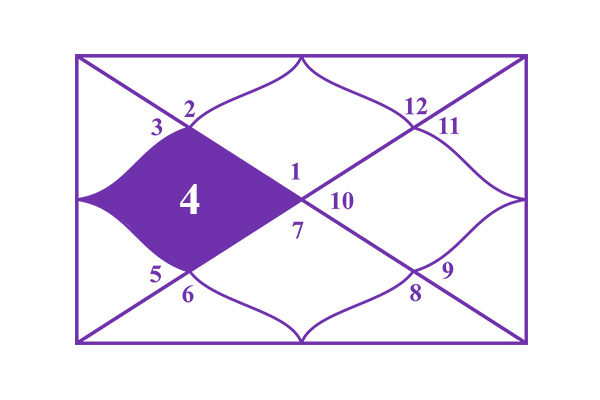
This house represents home, family, comfort, and emotional security. Often called the “House of Mother,” it relates to one’s relationship with their mother, domestic environment, real estate, and inner peace. It also indicates one’s sense of belonging and emotional foundation.
Read More: 4th House of Astrology: Home, Family, and Emotional Foundation
5th House (House of Creativity, Children, and Education)
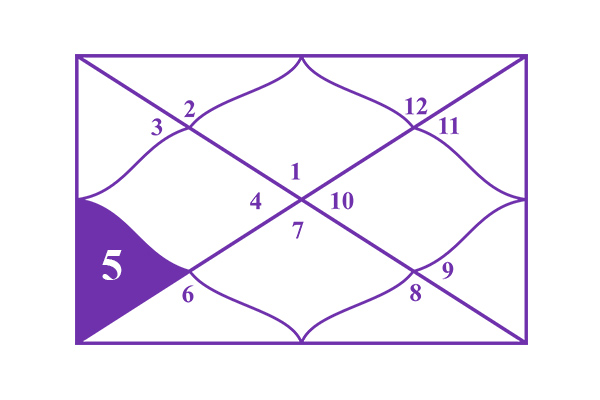
Governing creativity, intelligence, education, and children, the Fifth House is also associated with romance, play, and spiritual practices. It reflects one’s creative self-expression, relationships with children, and overall enjoyment of life. It’s often called the “House of Good Karma” due to its connection to past-life merit.
Read More: 5th House in Astrology: Meaning, Ruler, and Significance
6th House (House of Health and Service)

The Sixth House deals with health, daily routines, service, and challenges. It represents work, employees, enemies, and obstacles in life. This house also indicates how one manages discipline, stress, and wellness, including one’s approach to overcoming adversities and competing in the world.
Read More: 6th House of Astrology: Meaning, Significance, and Ruler
7th House (House of Partnership and Marriage)
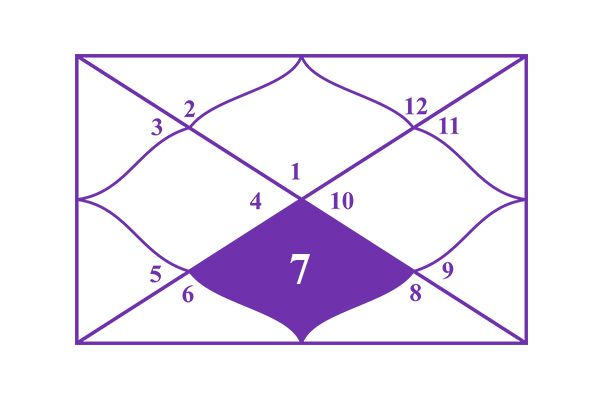
Often referred to as the “House of Marriage,” the Seventh House governs relationships, partnerships, and marriage. It reveals qualities one seeks in a partner, as well as one’s approach to committed relationships. This house also relates to business partnerships and one’s attitude toward others.
Read More: 7th House of Astrology: Meaning, Ruler, and Significance
8th House (House of Transformation and Mysteries)

The Eighth House is associated with transformation, death, rebirth, inheritance, and hidden matters. It represents shared resources, secrets, occult sciences, and deep psychological changes. This house deals with life’s mysteries and transformational experiences, symbolizing endings and new beginnings.
Read More: 8th House Astrology: Meaning, Ruler, and Significance
9th House (House of Dharma and Higher Knowledge)

The Ninth House, called the “House of Dharma,” governs spirituality, religion, higher education, and long-distance travel. It represents one’s faith, wisdom, and moral beliefs. This house is associated with luck, fortune, and spiritual growth, often reflecting one’s connection to teachers and mentors.
Read More: 9th House in Astrology: Meaning, Ruler, and Significance
10th House (House of Career and Status)
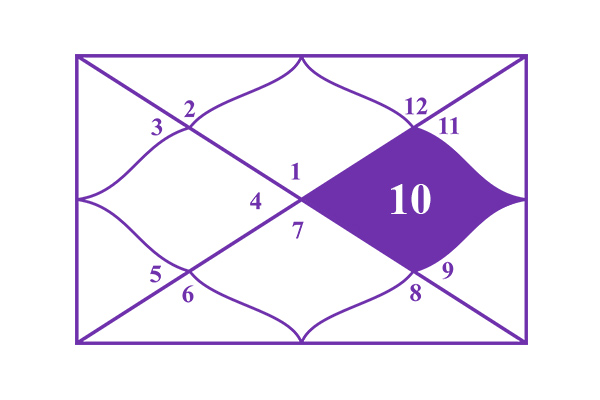
Known as the “House of Karma,” the Tenth House represents career, public life, reputation, and status. It shows one’s ambitions, achievements, and professional path. Planets in this house influence one’s vocation, success, and contribution to society, revealing the legacy one aims to build.
Read More: 10th House of Astrology: Meaning, Ruler, and Career Significance
11th House (House of Gains and Social Circles)

The Eleventh House governs income, gains, friendships, and social networks. It is also associated with aspirations, achievements, and financial profits. This house reflects one’s connection to larger groups, social causes, and one’s pursuit of long-term goals and desires.
Read More: 11th House of Astrology: Meaning, Ruler, and Career Significance
12th House (House of Losses and Liberation)

The Twelfth House, often called the “House of Moksha” (liberation), deals with endings, spirituality, and the subconscious mind. It represents isolation, foreign travel, losses, and expenses. This house signifies detachment, self-reflection, and transcendence, as well as the need for spiritual liberation.
Read More: 12th House of Astrology: Meaning, Ruler, and Hidden Significance
Each house in Vedic astrology provides insights into specific life areas, creating a comprehensive map of one’s life journey. While the houses reveal where life’s events unfold, the planets show how each area is energized, shaping your motivations, challenges, and strengths across the astrological landscape. Let’s dive into the powerful influence of the planets now.
Planets and Their Cosmic Impact
In astrology, planets play a crucial role as they are believed to emit specific energies that influence our lives, behaviors, and life paths. Unlike Western astrology, Vedic astrology includes both visible planets and certain lunar nodes, adding up to nine main celestial bodies, each associated with unique qualities and effects. Here’s a detailed look at the nine planets in Vedic astrology and their significance:
Sun (Surya): The Soul and Vitality

The Sun represents the self, soul, ego, vitality, and willpower. As the ruler of authority and leadership, the Sun influences one’s health, confidence, and overall purpose in life. Its position in the chart reflects one’s core identity and spirit, providing insight into personal power, ambitions, and individual strength. The Sun rules the sign, Leo.
Read More: Sun (Surya Graha) in Astrology
Moon (Chandra): The Mind and Emotions
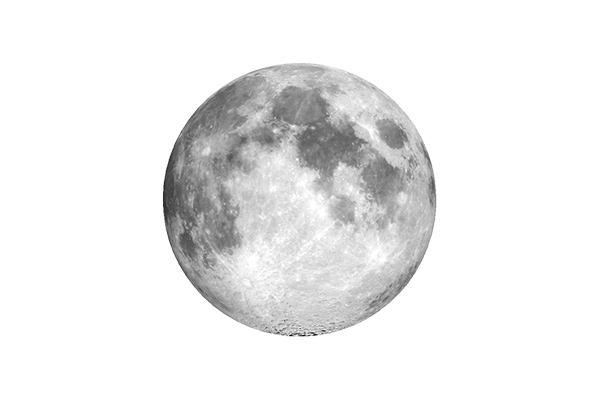
The Moon governs emotions, mind, intuition, and mental stability. It is deeply connected to one’s feelings, nurturing qualities, and sense of comfort. The Moon also symbolizes the mother and home environment, and its placement reflects one’s inner emotional world and responsiveness. The Moon rules the sign, Cancer.
Read More: Moon (Chandra Graha) in Astrology
Mars (Mangal): Action and Courage

Mars represents energy, courage, passion, and assertiveness. It is linked to strength, desire, and the ability to face challenges, as well as physical stamina. Mars influences one’s drive, competitive spirit, and determination to pursue goals. Often associated with aggression, it also rules ambition and leadership in challenging situations. Mars rules Aries and Scorpio.
Read More: Mars (Mangal Graha) in Astrology
Mercury (Buddh): Communication and Intellect
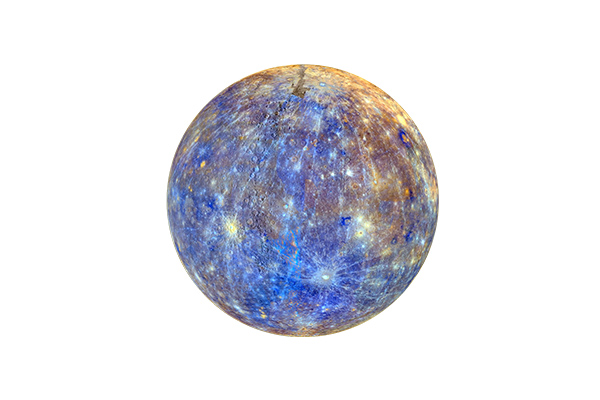
Mercury governs intellect, communication, reasoning, and adaptability. Known as the planet of logic and quick thinking, it influences one’s analytical skills, speech, and business awareness. Mercury is also linked to learning, travel, and curiosity, making it central to mental agility and interactions. Mercury rules Gemini and Virgo.
Read More: Mercury (Budh Graha) in Astrology
Jupiter (Guru): Wisdom and Expansion

Jupiter is the planet of wisdom, spirituality, growth, and fortune. Known for its expansive energy, Jupiter governs optimism, higher learning, and moral values. It influences generosity, faith, and one’s philosophical outlook, often bringing opportunities and abundance. As a benefic planet, Jupiter represents the teacher or Guru. Jupiter rules Sagittarius and Pisces.
Read More: Jupiter (Guru Graha) in Astrology
Venus (Shukra): Love and Beauty

Venus is associated with love, beauty, luxury, and pleasure. It governs relationships, art, wealth, and sensuality, and represents what brings happiness and harmony in life. Venus reflects one’s appreciation for aesthetics, social connections, and values related to beauty and enjoyment. Venus rules Taurus and Libra.
Read More: Venus (Shukra Graha) in Astrology
Saturn (Shani): Discipline and Karma

Saturn represents discipline, structure, responsibility, and karma. Known as the taskmaster, Saturn’s influence is often challenging but ultimately rewarding, teaching patience, perseverance, and resilience. It represents long-term efforts, restrictions, and life lessons that encourage growth through hardship and maturity. Saturn rules Capricorn and Aquarius.
Read More: Saturn (Shani Graha) in Astrology
Rahu (North Node of the Moon): Desires and Materialism

Rahu, a shadow planet, represents desires, worldly attachments, and ambitions. It is associated with unconventional paths, foreign influences, and a thirst for material success. Rahu can create illusion and obsession, leading to intense pursuits and breakthroughs. While it often brings growth, it can also foster confusion or deception when not balanced.
Read More: Rahu (North Node of Moon) in Astrology
Ketu (South Node of the Moon): Detachment and Spirituality
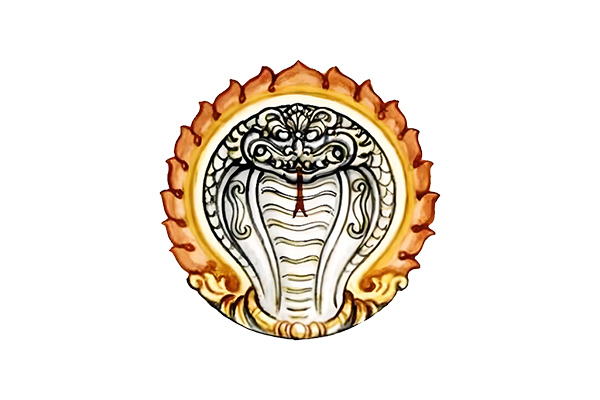
Ketu, the other shadow planet, symbolizes spirituality, detachment, and past-life influences. Opposite to Rahu, Ketu is connected to renunciation, intuition, and introspection. It encourages spiritual growth, self-realization, and the ability to overcome ego and material desires. Ketu’s influence often leads to a deeper understanding of life’s intangible aspects.
Read More: Ketu (South Node of Moon) in Astrology
Understanding Planetary Impacts in Vedic Astrology

In astrology, planets exert their effects based on their positions within the twelve houses and signs, creating a unique influence in everyone's birth chart. Additionally, in Vedic astrology, the Mahadasha (major planetary period) and Antardasha (sub-periods) highlight the primary planet’s influence during certain life phases, shaping specific events and challenges. As each planet rules certain characteristics and aspects of life, their combinations, positions, and relationships (like conjunctions and aspects) provide a detailed map of one’s strengths, challenges, karmic patterns, and potential.
Benefic and Malefic Planets
In Vedic astrology, planets are also classified as benefic or malefic, depending on whether they typically bring positive or challenging influences:
Benefic Planets: Jupiter, Venus, Mercury, and the waxing Moon (favorable for growth, harmony, and success).
Malefic Planets: Saturn, Mars, Rahu, Ketu, and the waning Moon (may bring challenges, restrictions, and transformation).
By understanding the specific energies and placements of these planets, Vedic astrology provides insights into a person’s personality, life journey, and karmic influences, allowing for greater self-awareness and guidance through the cosmic energies at play.
Exploring Nakshatras: Vedic Astrology’s Lunar Mansions
In Vedic astrology, the concept of Lunar Mansions, or Nakshatras, is an ancient and complex system that divides the sky into 27 different sections, each governed by a certain star or constellation. These Nakshatras are crucial in shaping an individual's personality, behavior, and life path. Western astrology predominantly concentrates on zodiac signs, whereas Vedic astrology highlights Nakshatras to offer a more profound and intricate examination of an individual's birth chart.
What are Lunar Mansions or Nakshatras?
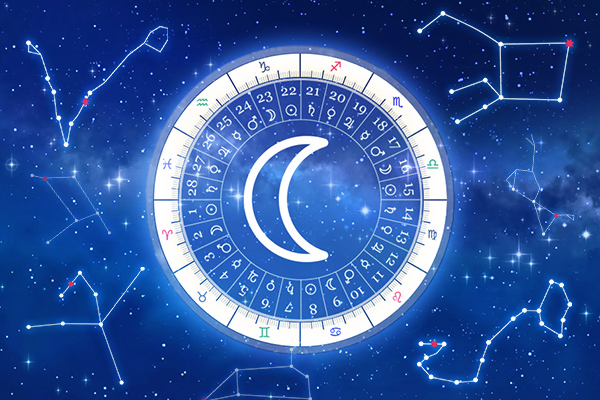
The moon completes its circle around the Earth in approximately 27.3 days, crossing a distinct Nakshatra daily. Each of the 27 Nakshatras is associated with a particular star or constellation, with each Nakshatra spanning roughly 13°20′ of the zodiac. As the moon represents emotions, mind, and inner self in Vedic astrology, the Nakshatra that the moon occupies at the time of birth is of special significance. This Nakshatra, referred to as the 'birth star,' offers insight into an individual's emotional characteristics, mental characteristics, and overall life experiences.
Essential Characteristics of Nakshatras
Every Nakshatra possesses a distinct personality, symbolic significance, and governing God, collectively providing insights into an individual's fundamental characteristics and inclinations. The Nakshatras possess several distinguishing characteristics:
Symbol and Mythology:
Each Nakshatra is linked to a symbol, such as an animal, weapon, or natural element, along with a governing deity. The symbolic and mythological association gives distinct attributes and challenges to those born under each Nakshatra.
Planetary Governance:
Each Nakshatra is presided over by one of the nine planets, referred to as its 'Nakshatra lord.' The governing planet affects the manifestation of the Nakshatra's energies, influencing several aspects of an individual's existence.
Characteristics and Traits:
Each Nakshatra possesses a distinct array of attributes, encompassing personality traits, strengths, weaknesses, and predispositions. Certain Nakshatras are correlated with creativity and intelligence, but others may be associated with discipline or spirituality.
Quarters (Pada):
Each Nakshatra is divided into four quarters, or Padas, each spanning 3°20′. These Padas add further intricacies, shaping particular personality characteristics and tendencies within each Nakshatra.
The 27 Nakshatras are:

Ashwini (0° – 13°20' Aries): Ruled by Ketu, this nakshatra symbolizes healing, swiftness, and vitality. Known as the 'star of transport,' it represents new beginnings and courage.
Bharani (13°20' – 26°40' Aries): Ruled by Venus, Bharani represents nurturing, growth, and transformation. Known for creativity and perseverance, it also symbolizes the power to bear burdens.
Krittika (26°40' Aries – 10° Taurus): Ruled by the Sun, this nakshatra signifies determination, willpower, and sharpness. Known as the 'star of fire,' it represents purification and power.
Rohini (10° – 23°20' Taurus): Ruled by the Moon, Rohini is associated with beauty, creativity, and abundance. It’s one of the most auspicious nakshatras for growth and fertility.
Mrigashira (23°20' Taurus – 6°40' Gemini): Ruled by Mars, Mrigashira represents curiosity, exploration, and searching. It’s known as the 'star of searching,' associated with creativity and adaptability.
Ardra (6°40' – 20° Gemini): Ruled by Rahu, Ardra signifies transformation, intensity, and emotional depth. Known as the 'star of sorrow,' it encourages growth through challenges.
Punarvasu (20° Gemini – 3°20' Cancer): Ruled by Jupiter, this nakshatra symbolizes renewal, optimism, and harmony. Known as the 'star of renewal,' it promotes resilience and second chances.
Pushya (3°20' – 16°40' Cancer): Ruled by Saturn, Pushya represents nourishment, kindness, and support. Known as the 'nurturer,' it’s considered one of the most beneficial nakshatras.
Ashlesha (16°40' – 30° Cancer): Ruled by Mercury, Ashlesha symbolizes insight, intellect, and mysticism. Known for its intense and transformative nature, it’s associated with serpentine wisdom.
Magha (0° – 13°20' Leo): Ruled by Ketu, Magha represents royalty, honor, and tradition. Known as the 'star of power,' it is associated with leadership and ancestral connections.
Purva Phalguni (13°20' – 26°40' Leo): Ruled by Venus, this nakshatra signifies enjoyment, creativity, and prosperity. Known for love and relaxation, it promotes relationships and harmony.
Uttara Phalguni (26°40' Leo – 10° Virgo): Ruled by the Sun, it symbolizes friendship, generosity, and hard work. Known for its supportive qualities, it emphasizes stability and lasting bonds.
Hasta (10° – 23°20' Virgo): Ruled by the Moon, Hasta represents skill, resourcefulness, and dexterity. Known as the 'hand,' it’s associated with craftsmanship and practicality.
Chitra (23°20' Virgo – 6°40' Libra): Ruled by Mars, Chitra symbolizes beauty, creativity, and mystery. Known as the 'star of opportunity,' it promotes artistic expression.
Swati (6°40' – 20° Libra): Ruled by Rahu, Swati represents independence, adaptability, and movement. Known for its resilience, it promotes freedom and the ability to go with the flow.
Vishakha (20° Libra – 3°20' Scorpio): Ruled by Jupiter, Vishakha signifies determination, ambition, and focus. Known as the 'star of purpose,' it promotes success and perseverance.
Anuradha (3°20' – 16°40' Scorpio): Ruled by Saturn, Anuradha represents friendship, loyalty, and devotion. Known for harmony and cooperation, it encourages spiritual growth.
Jyeshtha (16°40' – 30° Scorpio): Ruled by Mercury, Jyeshtha signifies protection, authority, and strength. Known as the 'eldest star,' it symbolizes power and responsibility.
Mula (0° – 13°20' Sagittarius): Ruled by Ketu, Mula represents roots, foundations, and truth-seeking. Known for its transformative energy, it encourages deep exploration and letting go.
Purva Ashadha (13°20' – 26°40' Sagittarius): Ruled by Venus, this nakshatra signifies victory, optimism, and invincibility. Known as the 'invincible star,' it promotes determination and ambition.
Uttara Ashadha (26°40' Sagittarius – 10° Capricorn): Ruled by the Sun, it symbolizes endurance, leadership, and willpower. Known as the 'star of success,' it promotes achievement and respect.
Shravana (10° – 23°20' Capricorn): Ruled by the Moon, Shravana represents listening, learning, and wisdom. Known as the 'star of learning,' it encourages knowledge and spirituality.
Dhanishta (23°20' Capricorn – 6°40' Aquarius): Ruled by Mars, Dhanishta symbolizes wealth, music, and rhythm. Known for abundance and prosperity, it promotes creativity and harmony.
Shatabhisha (6°40' – 20° Aquarius): Ruled by Rahu, Shatabhisha represents healing, introspection, and mysticism. Known as the 'star of 100 healers,' it encourages healing and independence.
Purva Bhadrapada (20° Aquarius – 3°20' Pisces): Ruled by Jupiter, Purva Bhadrapada signifies transformation, intensity, and spirituality. Known for its depth, it promotes spiritual insight and resilience.
Uttara Bhadrapada (3°20' – 16°40' Pisces): Ruled by Saturn, Uttara Bhadrapada represents stability, kindness, and compassion. Known for its grounding energy, it promotes balance and inner peace.
Revati (16°40' – 30° Pisces): Ruled by Mercury, Revati symbolizes prosperity, completion, and guidance. Known as the 'wealthy star,' it encourages growth, fulfillment, and protection.
The Significance of Nakshatras in Vedic Astrology

Nakshatras enhance Vedic astrology by offering a more detailed understanding of human characteristics, life objectives, and karmic effects. They are especially important for assessing compatibility in relationships (by Kundli matching), comprehending emotional inclinations and evaluating certain life events.
The Mahadasha and Antardasha (planetary periods) in Vedic astrology are correlated with Nakshatras. These periods reflect major themes and transitions in an individual's life, influenced by the energy of the ruling planet of the Nakshatra where the moon was located at birth.
Nakshatras and the Lunar Calendar
The Nakshatras have a strong connection to the lunar calendar in Vedic traditions, with each day's assigned Nakshatra considered favorable for various activities. Certain Nakshatras are considered ideal for beginning new endeavors, whereas others are appropriate for contemplation, healing, or spiritual activities.
The Spiritual Dimension of Nakshatras

Nakshatras possess a spiritual element that transcends personality and life circumstances, as they embody different aspects of consciousness. They represent energies that direct individuals through different phases of self-exploration and spiritual development. The exploration of each Nakshatra provides teachings and revelations of one's karmic trajectory, assisting individuals in understanding and aligning with their higher purpose.
Nakshatras are a fundamental aspect of Vedic astrology, providing a detailed insight into an individual's emotional disposition, interpersonal interactions, professional endeavors, and spiritual development. Through an analysis of the energies and symbolism of the Nakshatras, astrologers may offer thorough aqdvice customized to an individual's unique birth chart, assisting them in navigating life's journey with greater insight and awareness.
Dashas and Transits: Mapping Life’s Cycles
Dashas and Transits are powerful systems that help to predict life events, timing, and key shifts in an individual’s journey. Dashas and transits give astrologers a way to understand not only what influences are active in someone’s life but also when specific influences are most powerful, marking significant phases, growth opportunities, and potential challenges.
What Are Dashas?
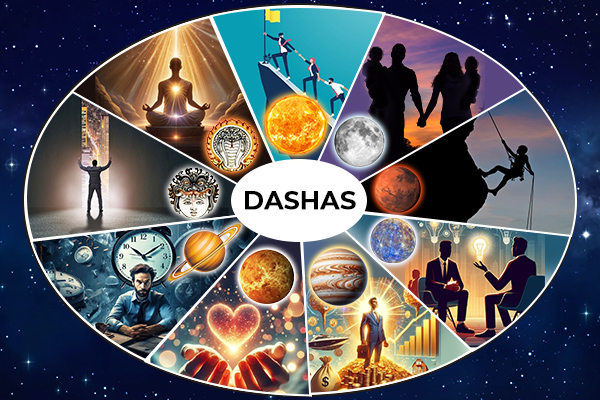
In Vedic astrology, Dashas are planetary periods that outline the sequence and timing of major life themes. The Vimshottari Dasha system, the most used Dasha system, is a 120-year cycle where each planet governs a specific period. This system breaks down an individual’s life into major phases ruled by each planet, known as the Mahadasha , with sub-periods, or Antardasha , that add further detail.
Each planet’s Dasha has its own nature, bringing its unique influence on the individual’s life during that period. Here’s a brief look at what each planet’s Mahadasha might represent:
Sun Dasha: A time for leadership, confidence, self-realization, and public recognition. The Sun’s period often emphasizes individuality, career growth, and personal power.
Moon Dasha: This period focuses on emotions, relationships, and family. It brings themes of nurturing, mental peace, or emotional transformation.
Mars Dasha: A period of action, courage, and assertiveness. It may bring challenges but also energizes ambition, initiative, and personal strength.
Mercury Dasha: Emphasizes communication, learning, and intellectual growth. It is often a time for mental clarity, adaptability, and creative pursuits.
Jupiter Dasha: Known for bringing wisdom, growth, and opportunities. Jupiter’s period often involves spiritual growth, prosperity, and expansion in various areas of life.
Venus Dasha: A time for beauty, relationships, and comfort. Venus brings love, creativity, and an appreciation for art, as well as financial stability.
Saturn Dasha: This period can be challenging but brings discipline, structure, and responsibility. It often represents karmic lessons, endurance, and the development of resilience.
Rahu Dasha: Known as a time of material pursuits, desires, and sometimes confusion. Rahu’s period may bring sudden changes, ambition, and a drive for worldly success.
Ketu Dasha: Associated with spirituality, detachment, and introspection. Ketu’s period encourages a focus on inner growth, releasing material attachments, and exploring deeper spiritual truths.
Each Dasha’s duration and specific influence vary based on the individual’s birth chart, creating a highly personalized timeline for major life events.
What Are Transits?

In both Western and Vedic astrology, transits refer to the current movement of planets in the sky and how these movements interact with the positions of planets in one’s birth chart. Transits bring in real-time influences, reflecting short-term events, emotions, and changes in perspective. Unlike Dashas, which outline broader life periods, transits offer immediate and specific insights into present or upcoming influences.
Some significant transits include:
Sun Transit: As the Sun transits through the zodiac, it activates different aspects of the birth chart each month, bringing focus and energy to those areas.
Moon Transit: The Moon’s rapid transit through the signs every 2-3 days affects our mood, instincts, and emotional responses. Its daily movement is particularly important in Vedic astrology for Muhurta (choosing auspicious times).
Mercury Transit: Mercury transits influence communication, thought processes, and decision-making. Retrogrades of Mercury are well-known for causing delays and misunderstandings.
Venus Transit: Venus brings focus to love, relationships, and finances. During Venus transits, there may be a focus on beauty, romance, and values.
Mars Transit: Mars transits affect energy levels, assertiveness, and drive. These periods can increase motivation and courage but also lead to impatience or conflict.
Jupiter Transit: Lasting about one year per sign, Jupiter’s transit brings growth, opportunities, and a sense of expansion, often providing support in the areas it touches.
Saturn Transit: Saturn’s long transits of about 2.5 years per sign are significant for discipline, responsibilities, and life lessons. Saturn’s transit through specific houses is linked to periods of maturity and facing karmic lessons.
Rahu and Ketu Transits: As they move retrograde through the zodiac every 18 months, these shadow planets bring transformational change. Rahu emphasizes worldly gains and desires, while Ketu brings detachment and spiritual insight.
Combining Dashas and Transits
In Vedic astrology, both Dashas and transits are used together to create a complete picture. A Dasha period sets the stage for major life themes, while transits reveal specific influences and events within that period. For example, if someone is in a Jupiter Mahadasha (a time of growth and wisdom), a Saturn transit through their tenth house (career) could bring hard work and responsibility in professional growth. In this way, transits add specific detail to the broader narrative outlined by the Dashas.
In Western astrology, transits are often paired with progressions (a method that symbolically advances the planets from the birth chart) to understand how life unfolds over time, mirroring the influence of Dashas in Vedic astrology.
As dashas and transits reveal the timing of life’s events, aspects uncover the dynamic relationships between planets, shaping how these influences manifest. Let’s explore how planetary aspects impact our experiences and interactions.
Aspects in Astrology: Alignments and Effects

After covering the time of events through Dashas and Transits, we shall now go to another essential element in astrology: Aspects. Aspects are the angles and relationships established between planets, revealing the relationship and effect of various planetary energies within the natal chart. These interactions create a web of connections that profoundly impact personality, tendencies, and life events, bringing in dynamic dimensions to both Vedic and Western astrological studies.
What Are Aspects?
In astrology, aspects are essentially the angles that planets form with each other as they move through the zodiac. These angles create relationships between planetary energies, amplifying, challenging, or harmonizing their effects. Each planet has its specific aspects that influence different parts of the chart, based on the unique angles they form.
Unique Aspects in Vedic Astrology (Drishti)
In Vedic astrology, each planet has specific aspects, focusing on houses from its placement:
Sun: Aspects the 7th house, bringing vitality, authority, and a strong sense of self into partnerships and relationships. The Sun’s aspect can foster leadership qualities and influence one’s public image, though it may sometimes create a need for dominance or control in these areas of life.
Moon: Aspects the 7th house, offering nurturing, emotional depth, and sensitivity within relationships. This aspect encourages empathy and connection but can also make one reliant on emotional support from others in partnerships.
Mercury: Aspects the 7th house, enhancing communication, adaptability, and intellectual exchange within partnerships. Mercury’s aspect brings a logical and practical approach to relationships but may also encourage a focus on dialogue and mental stimulation in these interactions.
Mars: Aspects the 4th, 7th, and 8th houses, creating assertive, competitive, and sometimes challenging influences, especially in these areas of life.
Jupiter: Aspects the 5th, 7th, and 9th houses, bringing growth, wisdom, and protection to these areas.
Saturn: Aspects the 3rd, 7th, and 10th houses, emphasizing discipline, hard work, and responsibility.
Rahu and Ketu: These shadow planets aspect the 5th and 9th houses from their positions, influencing karmic patterns, life’s hidden forces, and spiritual growth.
In addition to these, all planets aspect the 7th house from their own position, creating a special focus on partnerships, relationships, and the areas of life opposite to where they’re positioned.
Aspects in Western Astrology

In Western astrology, aspects are generally measured in degrees and include key angles such as the conjunction (0°), opposition (180°), square (90°), trine (120°), and sextile (60°). These angles can indicate harmony or tension, reflecting whether the planets work together smoothly or create challenges to be addressed.
In Vedic astrology, aspects work slightly differently. While conjunctions and oppositions are key in both systems, each planet in Vedic astrology has its unique aspect pattern, known as Drishti. Mars, for example, aspects the 4th, 7th, and 8th houses from its position, while Jupiter aspects the 5th, 7th, and 9th houses. These Vedic aspects add unique interpretative layers, focusing on specific houses and life areas influenced by each planet.
Types of Aspects in Western Astrology
Conjunction (0°): When two planets are in the same sign or very close in degree, their energies merge, creating a powerful combination that intensifies their influence. Depending on the planets involved, this can either be harmonious or challenging.
Opposition (180°): Planets opposite each other create a dynamic tension, often requiring balance and compromise. Oppositions can reveal areas of life where external challenges arise, encouraging growth through the resolution of conflicts.
Square (90°): This aspect creates tension and obstacles, often representing inner conflicts or challenges that must be worked through. Squares bring motivation to make changes but may also indicate areas of frustration.
Trine (120°): Known as a harmonious aspect, trines connect planets in signs of the same element (e.g., fire with fire), allowing their energies to flow smoothly. Trines often indicate natural talents, ease, and opportunities for growth in the areas involved.
Sextile (60°): This aspect is also harmonious but less intense than a trine. Sextiles indicate potential opportunities and talents that can be developed with a bit of effort and intention.
Why Are Aspects Important?
Aspects are essential in astrology because they reveal how different areas of life are interconnected. For instance, if a planet in your career house (10th house) aspects a planet in your home life (4th house), it can indicate a relationship between career and family dynamics, perhaps showing that work decisions impact home life or vice versa.
Aspects also highlight the interplay of supportive and challenging energies in the chart. Harmonious aspects, like trines and sextiles, show areas where there is natural flow and potential, whereas challenging aspects, like squares and oppositions, indicate areas where growth may come through overcoming obstacles.
Combining Aspects with Dashas and Transits
By examining aspects within a Dasha period or during a transit, astrologers can gain deeper insight into the nature of upcoming experiences. For instance, if someone is in a Venus Dasha and Venus forms a conjunction with Jupiter in their birth chart, this aspect can amplify themes of love, growth, and prosperity during this period. Similarly, during a transit, a challenging aspect, like a square from transiting Saturn to natal Mars, may indicate a time of patience, discipline, and facing obstacles with resilience.
When Dashas, transits, and aspects are analyzed together, they provide a comprehensive view of both the timing and nature of influences affecting an individual. Aspects describe how the energies interact, Dashas indicate when these influences will be most significant, and transits reveal the timing of immediate or upcoming events. Together, they form a rich framework that helps individuals navigate life’s opportunities, challenges, and lessons with a sense of cosmic timing and awareness.
Yogas and Doshas Explained: Hidden Influences in Your Birth Chart

Building upon our understanding of Dashas, Transits, and Aspects, we now explore Yogas and Doshas in astrology. The unique combinations and alignments in a birth chart have major consequences, indicating favorable situations (Yogas) or negative effects (Doshas). In Vedic astrology, Yogas and Doshas reveal significant themes in an individual's life, influencing destiny, opportunities, and possibilities for growth. Together, they form an essential component of astrological assessment, offering an understanding of the strengths and problems people may face.
What are Yogas?

In Sanskrit, 'Yoga' means union or conjunction, and in astrology, it refers to the beneficial combinations that arise when certain planets align harmoniously within a birth chart. Yogas are auspicious planetary alignments that enhance an individual’s life in specific areas, such as wealth, wisdom, health, or fame. There are numerous Yogas, each defined by the placement, strength, and mutual aspects of planets within specific houses or signs. Here are some prominent types of Yogas and their general effects:
Gaja Kesari Yoga: Formed when Jupiter is in a Kendra (1st, 4th, 7th, or 10th house) from the Moon. This Yoga bestows wisdom, intelligence, wealth, and respect. Those with Gaja Kesari Yoga are often influential and respected, with a natural inclination toward learning and leadership.
Budhaditya Yoga: Occurs when Mercury and the Sun are in conjunction in the same house. This Yoga enhances intellect, communication skills, and analytical abilities. People with Budhaditya Yoga are often gifted speakers and thinkers, capable of excelling in areas that require mental clarity.
Dhan Yoga: This wealth-bringing Yoga arises from the beneficial placement of planets in the 2nd, 5th, 9th, or 11th houses, often involving Venus, Jupiter, or Mercury. Those with Dhan Yoga are likely to have financial stability, success in business, and material abundance.
Viparita Raja Yoga: Formed when the lords of the 6th, 8th, or 12th houses are placed in one of these houses. This Yoga signifies success arising from challenges. Individuals with Viparita Raja Yoga often face difficulties but have the ability to turn adverse situations into opportunities for growth and accomplishment.
Panch Mahapurusha Yogas: These are five Yogas formed when Mars, Mercury, Jupiter, Venus, or Saturn are in their own or exalted signs and occupy Kendra houses. Each planet bestows distinct qualities: Mars gives courage (Ruchaka Yoga), Mercury provides intelligence (Bhadra Yoga), Jupiter brings wisdom (Hamsa Yoga), Venus offers luxury (Malavya Yoga), and Saturn grants discipline (Shasha Yoga).
What Are Doshas?
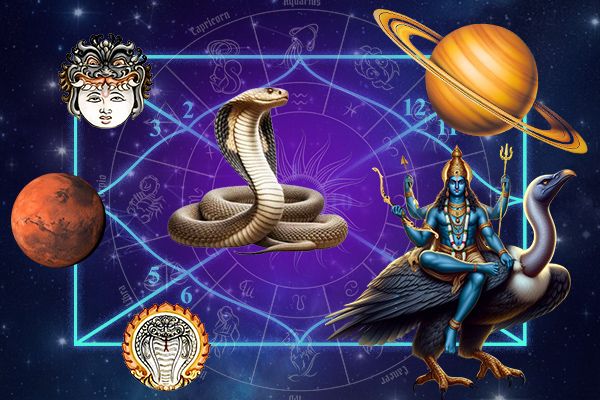
In contrast to Yogas, Doshas are inauspicious or challenging planetary combinations that bring obstacles or difficulties in specific areas of life. Doshas reveal karmic imbalances or lessons, often highlighting areas where growth and resilience are needed. While Doshas may seem negative, they can also motivate individuals to overcome challenges, ultimately fostering personal strength. Here are some well-known Doshas and their typical effects:
Manglik Dosha (Kuja Dosha): Occurs when Mars is placed in the 1st, 4th, 7th, 8th, or 12th house. Manglik Dosha is associated with marital challenges, indicating potential for conflict or instability in relationships. Remedies often include specific rituals or gemstone recommendations to mitigate the effects.
Kaal Sarp Dosha: Formed when all seven planets are hemmed between Rahu and Ketu (the lunar nodes). Kaal Sarp Dosha is believed to bring obstacles, delays, or difficulties in various aspects of life, often pushing individuals to confront their past actions or unresolved karmic issues.
Pitru Dosha: Arises from malefic placements in the 9th house, often linked to ancestral karma. Pitru Dosha is associated with family issues, difficulties in career, and a sense of unfulfilled responsibilities toward family or heritage. Remedies often include rituals to honor ancestors and alleviate karmic imbalances.
Shani Dosha (Sade Sati): Refers to the 7.5-year period when Saturn transits through the sign before, during, and after an individual’s moon sign. This period is known for testing patience, resilience, and responsibility, as Saturn brings life lessons in the form of restrictions, delays, and challenges.
Chandal Dosha: Formed when Jupiter and Rahu are in conjunction, this Dosha can lead to moral or ethical challenges. Individuals may face temptations or find it difficult to follow their inner moral compass, making this a time for self-reflection and moral integrity.
Types of Astrology: A Guide to Global Astrological Systems
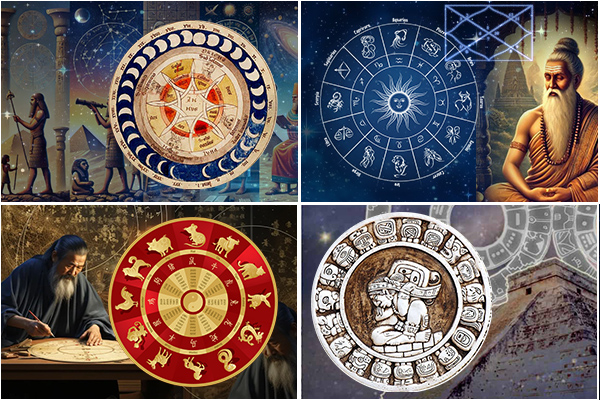
Astrology is a broad field with several systems and styles, each originating from different cultures and designed to address distinctive aspects of human life. Diverse astrological traditions provide unique methods and interpretations, ranging from personality insights to life predictions and spiritual development. This is an overview of the principal types and systems of astrology practiced worldwide:
Western Astrology: Rooted in ancient Babylonian and Hellenistic traditions, Western astrology uses the tropical zodiac, aligned with the seasons, starting with Aries at the spring equinox. It emphasizes the Sun sign as central to personality, with additional insights from the Moon, planets, and twelve houses. Popular techniques include natal chart interpretation, which reveals personality and life path, as well as transit astrology for forecasting current planetary influences on individual charts.
Vedic Astrology (Jyotish): Originating from ancient Indian scriptures, Vedic astrology uses the sidereal zodiac, which aligns with the fixed stars. Unlike Western astrology, Vedic astrology places a strong emphasis on the Moon sign and Nakshatras (lunar mansions) for deeper emotional and karmic insights. Key techniques include Dashas (planetary periods), which outline life phases, and Yogas and Doshas, which signify strengths and challenges within the chart.
Chinese Astrology: Based on the Chinese lunar calendar, this system assigns an animal sign to each year in a 12-year cycle—Rat, Ox, Tiger, and so on—paired with one of five elements: Wood, Fire, Earth, Metal, and Water. Chinese astrology provides unique personality insights and predictions based on the interplay of the animal sign and element for each individual’s birth year. The Four Pillars of Destiny (BaZi) offers further depth by analyzing year, month, day, and hour of birth.
Mayan Astrology: Emerging from the ancient Mayan civilization, this system uses the Tzolk'in calendar, a 260-day cycle with 20-day signs and 13 numbers. Each day sign represents specific traits, strengths, and life themes. Mayan astrology is often interpreted through the 'Tree of Life' approach, offering a unique perspective on one’s personality and life path based on the interaction between day signs and galactic numbers.
Popular Use of Astrology

Astrology has historically been regarded for its ability to offer insights into personality, relationships, and life cycles, rendering it a resource for self-discovery and advice. In modern times, people use astrology to understand their own unique features through birth charts, predict patterns or opportunities through transit readings, and evaluate compatibility in relationships using synastry charts. In addition to personal representation, astrology is frequently used for career advice, financial planning, and the timing of major life happenings. The rise in its popularity is due to the emergence of digital platforms, which allow access to daily horoscopes, enable interactions with astrologers, and provide online resources for learning the basics of astrology, so making it an accessible and widely used discipline for navigating life's complexities.
Astrology & Daily Life
Astrology has a unique role in daily life, offering guidance on navigating the rhythms and challenges we face each day. Many people consult astrology for daily horoscopes, which offer general advice based on the positions of the planets and moon. These insights can shape how individuals approach relationships, work, and personal projects by aligning their actions with favorable planetary influences. Additionally, specific planetary movements and moon phases are believed to affect mood, energy levels, and productivity, helping people decide when to focus on particular tasks or decisions. Whether checking a horoscope for insight, timing key events, or simply being mindful of the day’s cosmic energy, astrology provides a practical framework that aligns daily activities with the natural flow of the universe, bringing a sense of purpose and awareness into everyday routines.
Misconceptions & Misuse of Astrology

Astrology, despite its popularity, is often misunderstood and sometimes misused, leading to common misconceptions. One major misconception is that astrology is a form of fortune-telling that provides specific, unchangeable predictions about life events. In reality, astrology offers insights into potential influences and tendencies, rather than definitive outcomes, encouraging self-awareness and growth rather than reliance on fate. Another misconception is that horoscopes apply universally to all people under the same sun sign, when, in fact, each person’s birth chart is uniquely complex and nuanced. Misuse of astrology can occur when people make impulsive life decisions solely based on general horoscopes or when they use it as a tool for avoiding responsibility, believing that planets entirely control their actions. Responsible astrology emphasizes empowerment and self-reflection, encouraging people to use astrological insights as guidance rather than rigid rules.
Using Astrology to Wear Rudraksha & Gemstones

Astrology provides valuable insights into selecting Rudraksha beads and gemstones to balance planetary energies and enhance personal well-being. Each planet is linked to specific energies, and corresponding gemstones and Rudraksha beads are believed to harmonize these forces, such as the Three Mukhi Rudraksha for Sun or the Yellow Sapphire gemstone for Jupiter. However, astrology, while offering guidance, may have its limitations in precisely determining which gemstone or Rudraksha is most suitable for an individual, as it requires deep understanding of the birth chart and planetary influences.
This is where Rudraksha Ratna Chakra Therapy (RRCT) offers a more personalized and definitive solution. Developed by Sakhashree Neeta in 2012, RRCT is a holistic therapy based on extensive research into the therapeutic properties of Rudraksha beads and natural gemstones. RRCT combines different Mukhi Rudraksha beads with gemstones in a unique stringing method, targeting and healing specific chakras. This therapy not only supports emotional and physical well-being but also helps improve relationships, career, education, and finances.
Unlike astrology, which may provide general guidance, RRCT offers a more direct and effective approach to determining the most suitable gemstones for an individual’s specific needs. By harmonizing the chakras, RRCT enhances the overall energy balance, providing tangible improvements in just one week of consistent use. This makes RRCT a more definite and comprehensive method for finding the right gemstones, offering clarity and tangible results.
Conclusion
In conclusion, astrology serves as a powerful tool for understanding oneself, navigating life’s challenges, and fostering personal growth. By aligning daily decisions with planetary influences, exploring Yogas and Doshas, and using astrology to select Rudraksha beads and gemstones, individuals can harmonize their energies and enhance specific life aspects.
With pioneers like Rudra Centre providing quality and authentic products since 1997, individuals have access to trusted resources that support their spiritual and material well-being. When approached responsibly, astrology offers meaningful insights that empower individuals to lead more intentional, balanced, and fulfilled lives.


-in-Astrology.jpg)






.jpg)
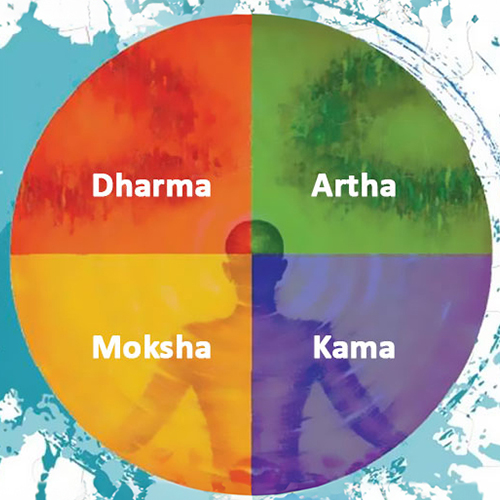


Comments 0
Leave your thought here